Home » Diet & Food »
6 Healthy Seeds You Should Eat Every Week
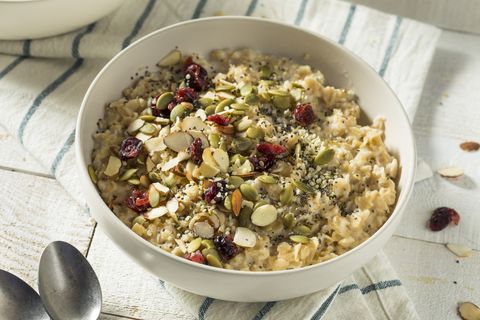
Seeds are powerhouses of heart-healthy mono- and poly-unsaturated fats, fiber, protein, and vitamins.
Because seeds are so nutrient-dense, you don’t need to eat that many to reap the benefits. The exact serving size varies depending on what kind of seed you’re eating, but a good general guideline is to aim for a 200-calorie serving (about 2 tablespoons) a day.
Because they are so nutrient-dense, a little goes a long way. The exact serving size varies depending on what kind of seed you’re eating, but a good general guideline is to aim for a 200-calorie serving, around 2 tablespoons, a day.
“Every seed is going to have a slightly different nutrient profile, so eating a range will give you the most diversity in nutrients,” says Melissa Halas-Liang, R.D., a dietitian based in Los Angeles.
“Every seed is going to have a slightly different nutrient profile, so eating a range will give you the most diversity in nutrients,” says Halas-Liang.
Plus: “People with nut allergies are often able to tolerate seeds,” says Halas-Liang.
Here are six seeds to work into your snack rotation.
Poppy
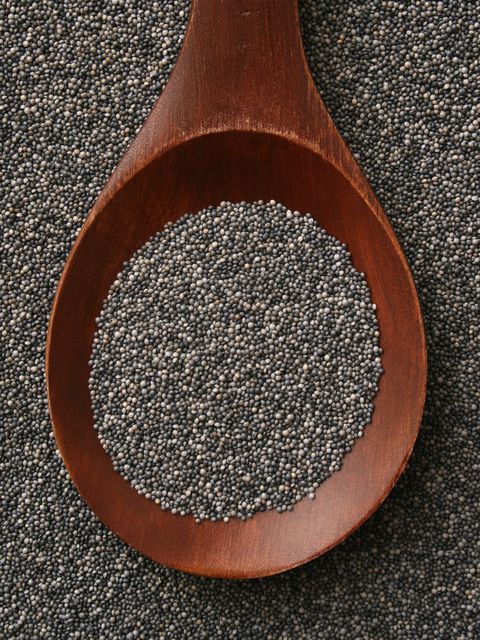
Getty ImagesFotografiaBasica
These tiny black orbs are pleasantly crunchy and rich in B vitamins, which may help boost your brain function, says Halas-Liang. Shake them into vinaigrettes for salad or mix into jam for crunch. And, yes, the rumor is true: Eat too many of them and any drug tests you take may show up positive for opium.
Hemp
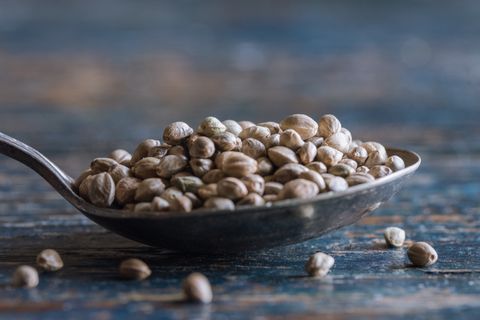
Getty ImagesMichelle Arnold / EyeEm
Hemp seeds often come shelled and are also known as hemp hearts. Beyond having nine grams of protein per 3-tablespoon serving, hemp hearts also contain ALA omega-3s, zinc, magnesium, and vitamin E, Halas-Liang says. They’re often sold in pre-portioned packets, which make them a good option for stashing in your desk drawer. Try them atop salads and soups, or blended into a smoothie for a hit of nuttiness.
Flax
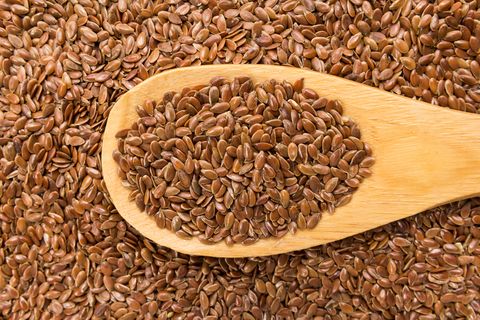
Getty ImagesGabriel Vergani / EyeEm
Like hemp seeds, flax seeds contain ALA, a type of omega-3 found in plants. They’re also rich in minerals including magnesium, manganese, and thiamin, says Halas-Liang. Halas-Liang likes mixing ground flax with breadcrumbs to make a crispy coating for lean protein (she makes tofu nuggets). One caveat: Grinding starts to break down the oils in the seeds, so store ground flax (or any ground seed, for that matter) in the fridge or freezer.
Sesame

Getty ImagesR.Tsubin
These Asian-food staples are an excellent source of calcium and a good source of bone-building phosphorus. The less common black variety tend to taste a tad more bitter, but contain anthocyanins, powerful antioxidants that have been shown to have benefits for memory and heart health. Try them atop avocado toast or blended into a quick homemade tahini.
Pumpkin

Getty ImagesMichelle Arnold / EyeEm
They also go by “pepitas,” and these large greenish seeds are high in zinc, which is a major player in fertility. They’re sold roasted, salted, or raw, and Halas-Liang likes them tossed with spices like paprika and scattered on a salad. They’re good salted as a simple snack too.
Chia
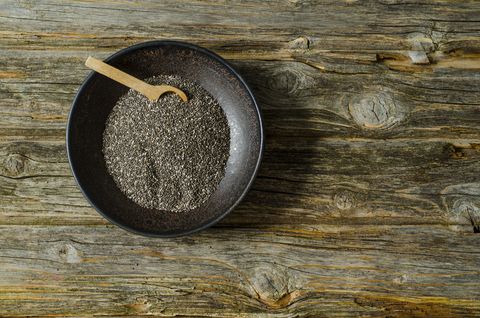
Getty ImagesWestend61
They’re lauded as much for their high protein content and ALA omega-3s as their ability to absorb massive amounts of liquid and turn into a kind of healthy, hydrating “pudding.” Halas-Liang stirs them into Greek yogurt, oatmeal, or smoothies. It’s tastier than it sounds. Promise.
Source: Read Full Article



